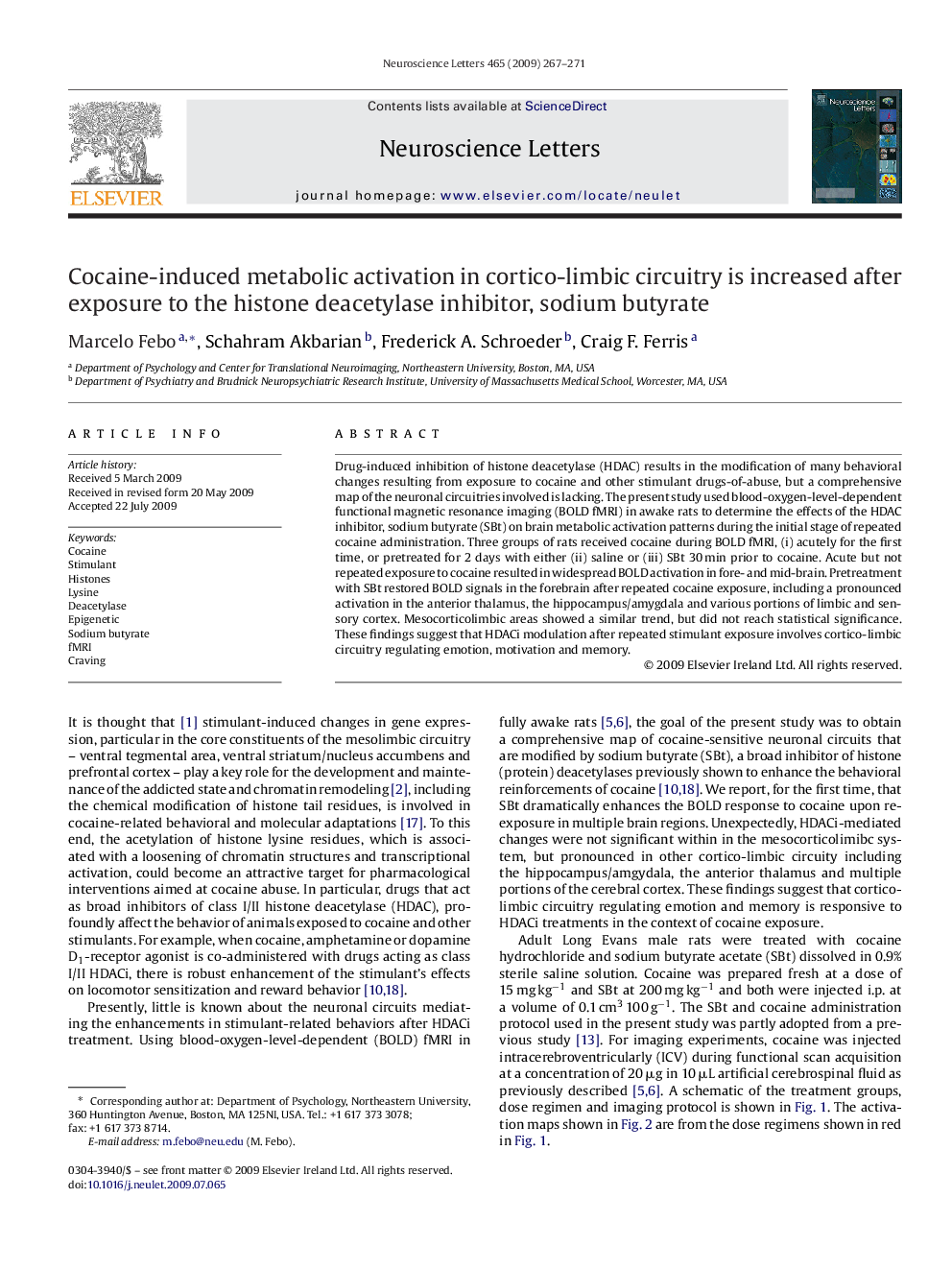| Article ID | Journal | Published Year | Pages | File Type |
|---|---|---|---|---|
| 4347340 | Neuroscience Letters | 2009 | 5 Pages |
Drug-induced inhibition of histone deacetylase (HDAC) results in the modification of many behavioral changes resulting from exposure to cocaine and other stimulant drugs-of-abuse, but a comprehensive map of the neuronal circuitries involved is lacking. The present study used blood-oxygen-level-dependent functional magnetic resonance imaging (BOLD fMRI) in awake rats to determine the effects of the HDAC inhibitor, sodium butyrate (SBt) on brain metabolic activation patterns during the initial stage of repeated cocaine administration. Three groups of rats received cocaine during BOLD fMRI, (i) acutely for the first time, or pretreated for 2 days with either (ii) saline or (iii) SBt 30 min prior to cocaine. Acute but not repeated exposure to cocaine resulted in widespread BOLD activation in fore- and mid-brain. Pretreatment with SBt restored BOLD signals in the forebrain after repeated cocaine exposure, including a pronounced activation in the anterior thalamus, the hippocampus/amygdala and various portions of limbic and sensory cortex. Mesocorticolimbic areas showed a similar trend, but did not reach statistical significance. These findings suggest that HDACi modulation after repeated stimulant exposure involves cortico-limbic circuitry regulating emotion, motivation and memory.
